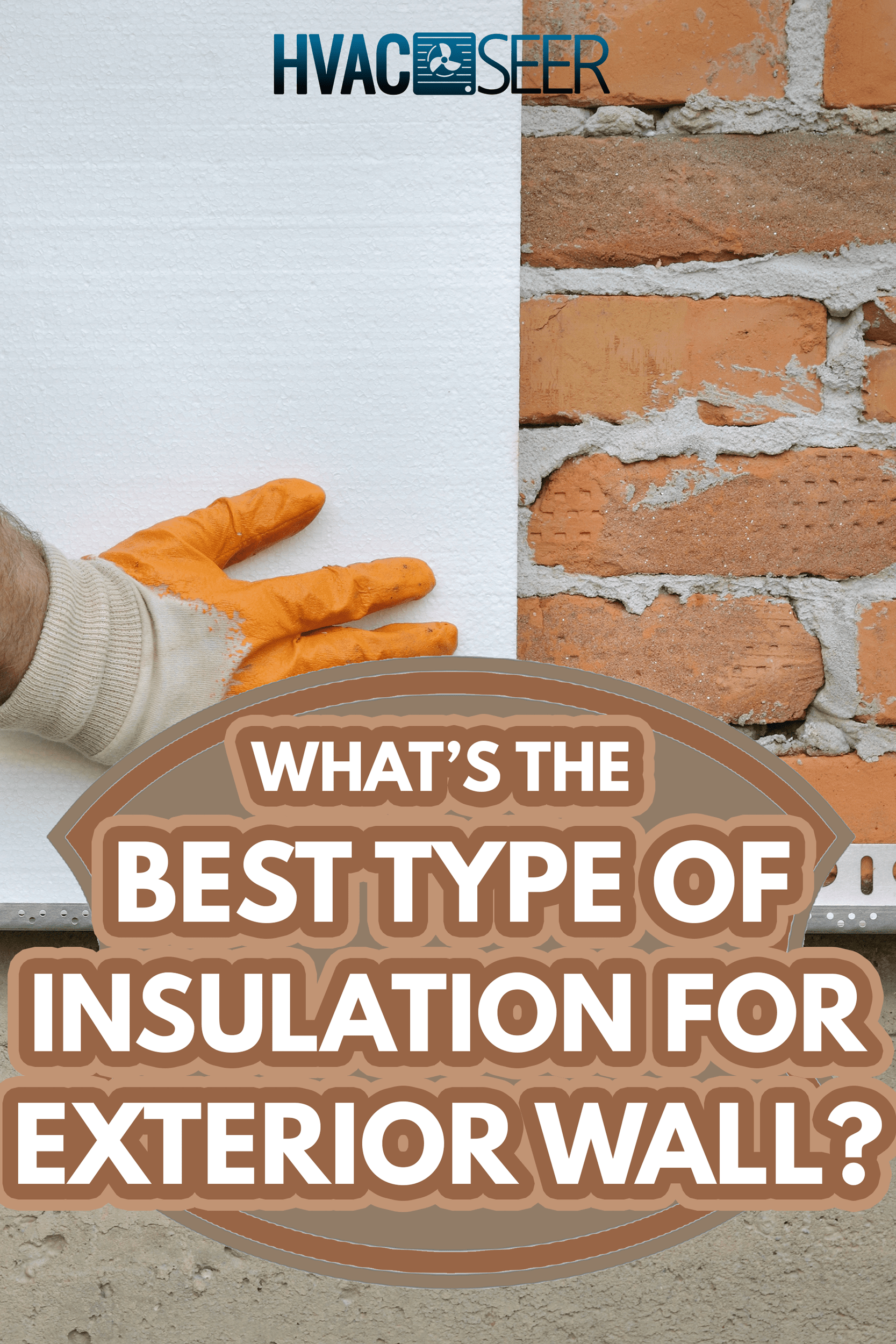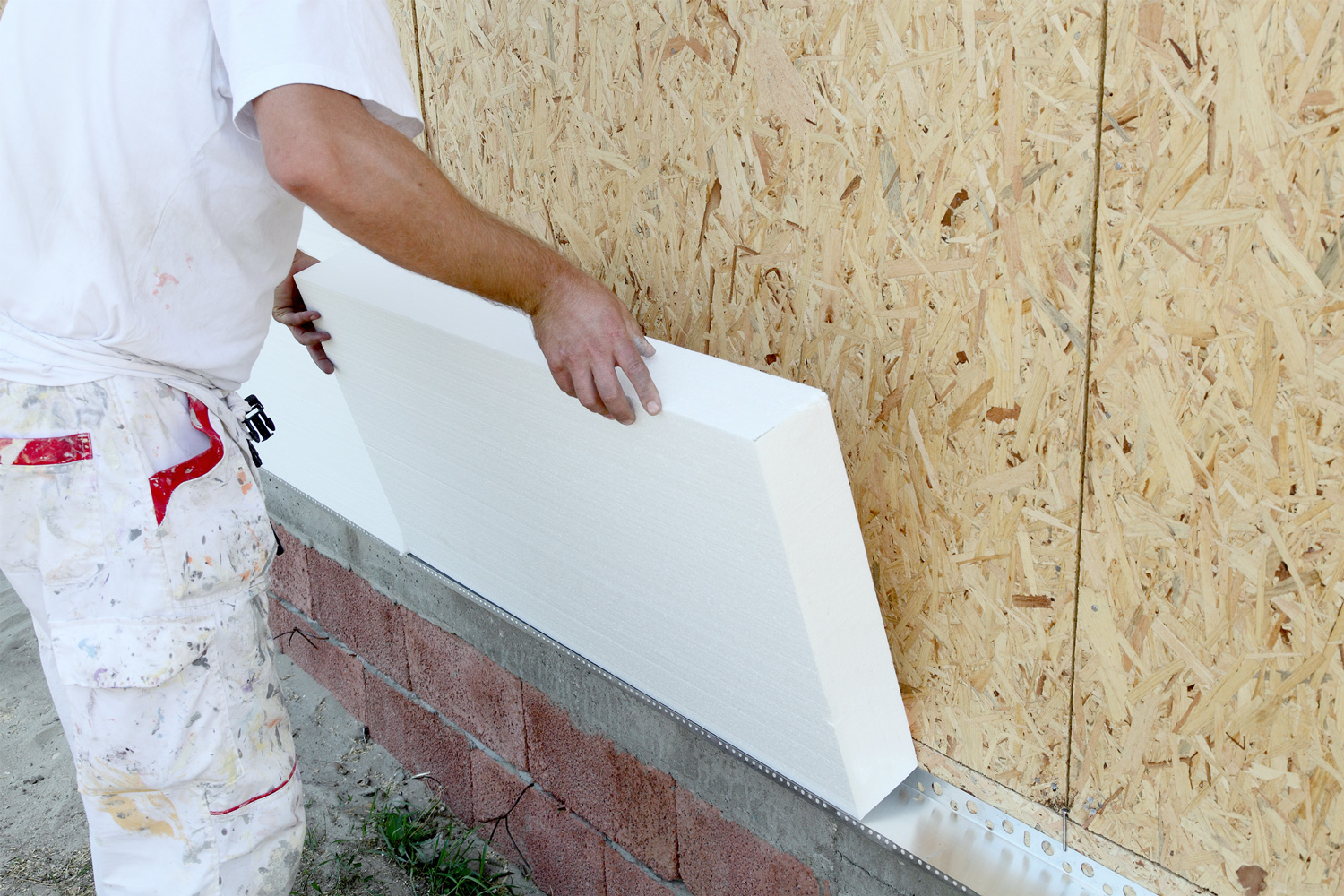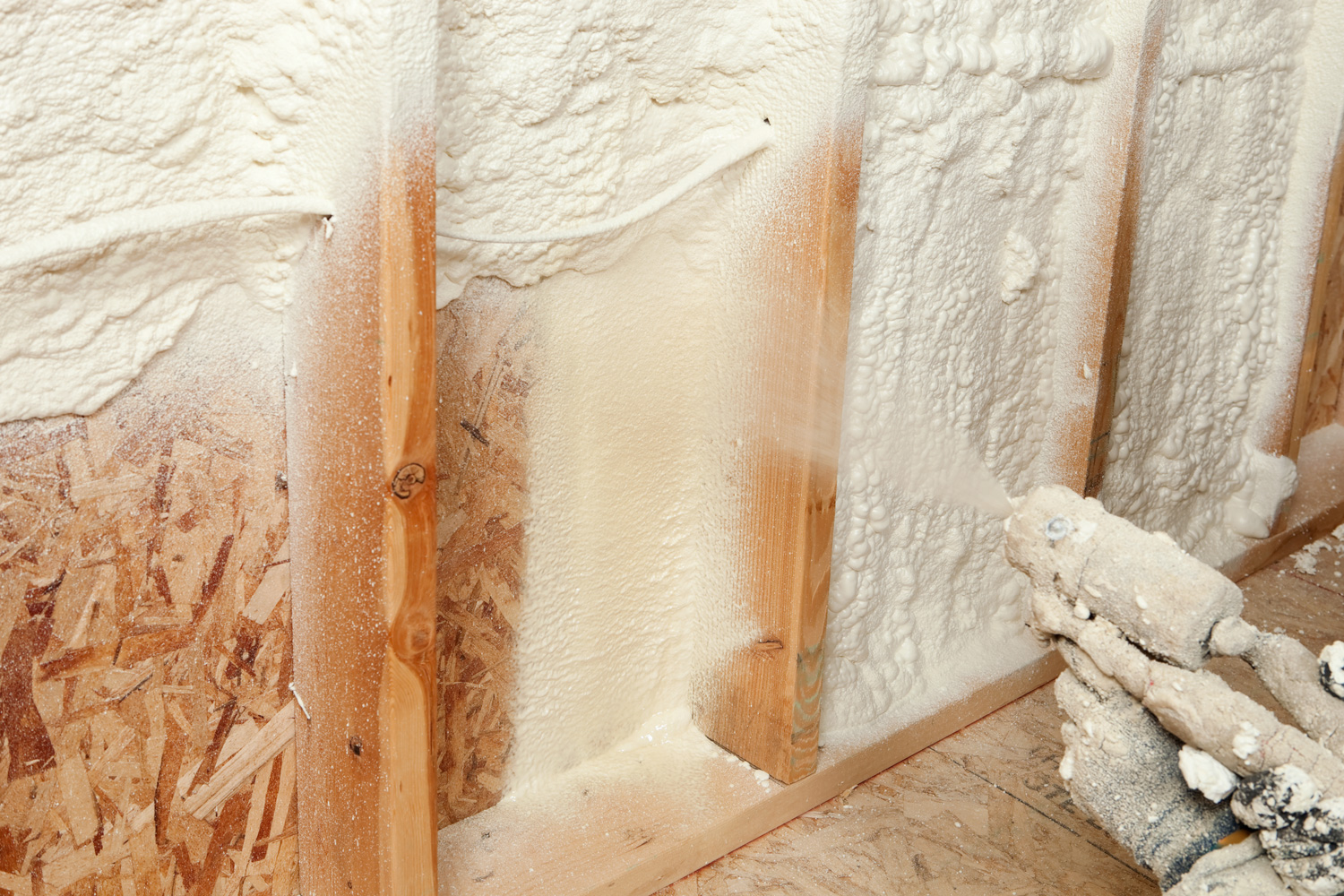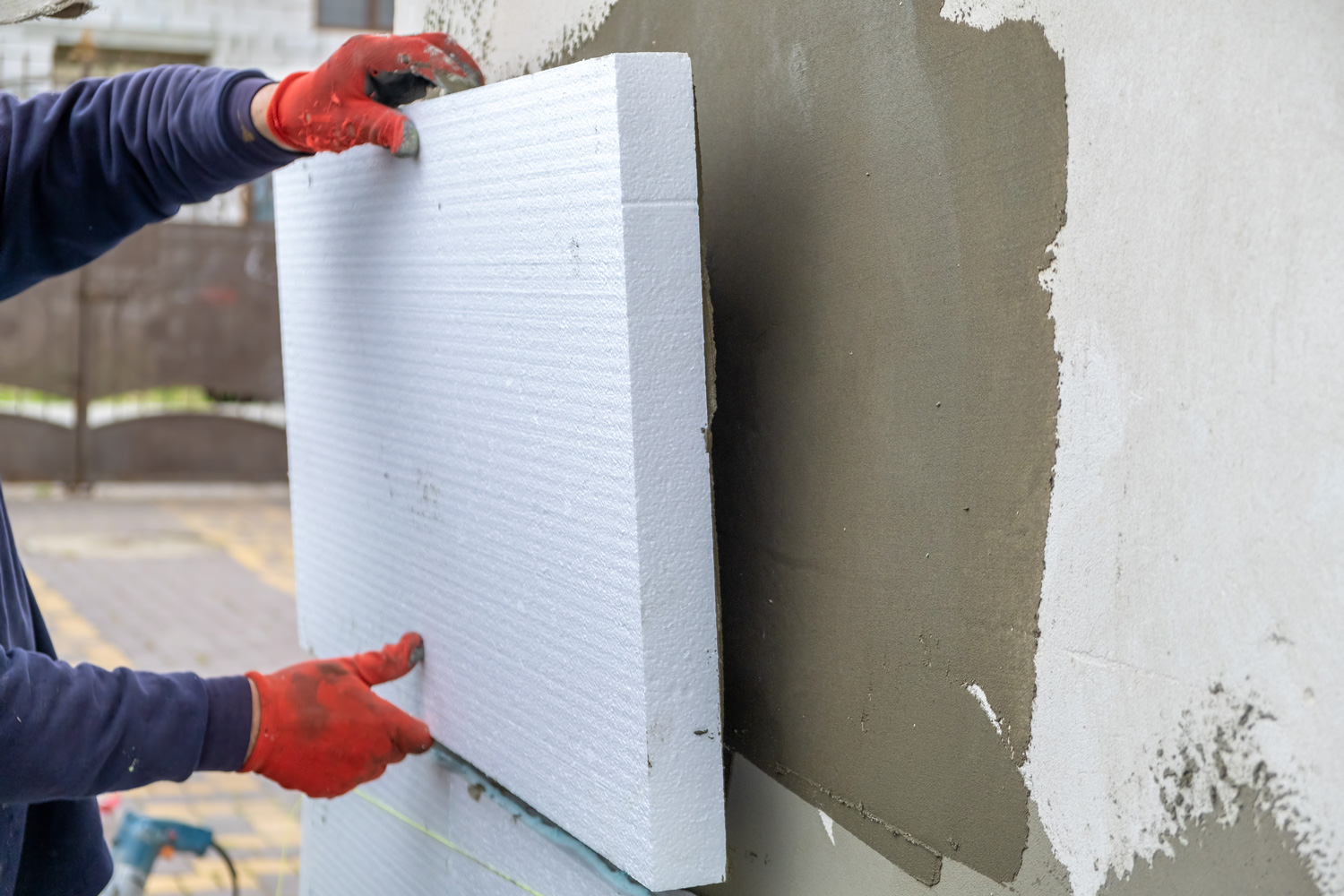Despite proper insulation on the interior of your home, do you still feel cold drafts in the winter or too warm in the summer? Or, are the energy bills soaring high without a valid explanation? Exterior insulation on the outside walls is a solution. But which type of insulation should you install? We consulted with the experts in the construction industry to provide you with the best answers.
The different types of insulation that are most suitable for open exterior walls include:
- Fiberglass insulation
- Foam board insulation
- Spray foam insulation
For enclosed exterior walls, you'll need:
- Blown-in cellulose insulation
- Inject foam insulation
Keep reading to comprehend the different insulation options available for the exterior walls of your home. Also, get to know the factors that should determine your choice and the benefits of exterior insulation.

What Is The Best Exterior Wall Insulation?

To make an informed choice, let's discuss in-depth the different types of insulation for the exterior walls of your home.
Open Exterior Walls
The best types of insulation for open walls consist of the following:
Fiberglass Insulation
Fiberglass, also known as glass wool fiber, appears clear or colorless and is formed when glass is heated to a very high temperature and then spun to create fibers.
The most common fiberglass insulation is in blanket and batt form, though it is also available in the loose-fill form. It has an R-value of 13 for 3.5 inches thick and an R-value of 30 for 12 inches thick.
The R-value for your insulation largely depends on your location. The colder it is, the higher the R-value you need for your exterior wall.
This low-cost insulation minimizes the movement of cold and hot air in or out of the house. However, it allows some airflow into and out of your home.
You have to be extra careful when handling fiberglass. It can break, exposing sharp edges that can cut you or cause you to itch. Besides, inhaling these tiny particles can be harmful to your respiratory system.
Wear the appropriate working gear, which includes goggles, a dust mask, disposable work overalls, and a pair of gloves.
Fiberglass is resistant to moisture and rust and can last up to 30 years. It can be created to look like stone or wood, or any other decoration to improve the aesthetics of your home.
The disadvantage with this insulation is that it steadily shifts and finally sags with time, which means it may have to be replaced at some point. So, even if it is cost-effective in the beginning, in the long run, it becomes more expensive.
Foam Board Insulation

These are rigid panels that are good for insulating the exterior walls of your home.
Made from polystyrene, a type of plastic with different R-values, foam board is available in four variations including polyurethane, polyisocyanurate, extruded polystyrene foam, and expanded polystyrene foam.
They are further divided into an open or closed-cell type of foam panel.
Open-cell means the cells are tightly packed together, while closed-cell means the cells are more loosely packed. Even though the closed cell is less permeable to moisture than the open cell, both are good for insulation.
It all depends on what type of climate it will be used in. For example, open-cell may not perform well in moist or humid areas.
In general, foam board insulation is an excellent barrier against moisture, a retardant against fire, and will increase the overall R-value of the exterior wall.
They come in different sizes and are very easy to install. A masonry blade or circular saw is used to cut the panels and then attached to the drywall using adhesives or screws with large washers.
Smaller pieces can be sealed using spray foam or caulk.
Spray Foam Insulation

Spray foam is mostly made from polyurethane or polyisocyanurate. You can either mix it with water or chemical, depending on the manufacturer's instructions.
With an R-value of 5.5 to 6.5 per inch, it is sprayed on the wall as a liquid, which expands into a thick foam. It fills even the tiniest of cavities, creating an air-tight seal, stopping the movement of air into and out of a home.
Closed-cell spray foam is preferable to open-cell spray foam because it is much more durable.
Enclosed Exterior Walls
These are walls with enclosed spaces inside them. Insulating these walls means filling up these spaces with suitable insulation material below:
Blown-in Cellulose Insulation
You don’t have to tear down your walls to insulate with cellulose. You can easily install it by drilling holes into the wall sheathing and blowing in the cellulose into the wall cavity, which you may access from the inside or outside your home.
Use a blower machine to fill in the cavities until completely filled. It can get messy during the process. Hence, it is advisable to wear a dust mask to avoid inhaling the dust particles from the cellulose.
The downside of this insulation is that it shifts with time, creating gaps that are not covered.
Below is a video that shows how to blow in cellulose into a wall cavity to insulate the exterior walls:
Injection Foam Insulation
Injection foam is made from retro foam. It has a consistency similar to that of shaving cream.
The advantage of this insulation is that it forms a tight air-seal because it fills the cavities in the wall, closing all the gaps and cracks, and neither does it settle or sag with time.
Thus, there is the prevention of airflow into or out of your home.
Check out this video that demonstrates how injection foam is installed:
Factors That Determine The Best Insulation For Your Exterior Wall
There are many different types of insulation that come in a variety of sizes and shapes.
Therefore, what factors should you take into consideration to make a sound decision on the material to use for your exterior walls?
You might as well be guided by a number of these factors:
Cost
Whereas insulation materials with higher R-values are very effective at keeping out heat or cold, they are usually expensive. Your budget will thus determine the type of insulation you can afford.
However, you may opt to spend a little more on insulation that is expensive but is effective and durable.
Durability
It would make much sense if you chose insulation that lasts long. It would be a waste of money to have it replaced after a few years.
Ease Of Installation
It would be much better to choose a type of insulation that would not require you to tear down a finished wall, but instead, just drill holes and install the material.
It gets more complex if there is a need to renovate, tearing down the walls to install, as with rigid foam boards.
R-value
As explained earlier in this post, the climate you live in largely determines the R-value required in the insulation material you will use.
Colder areas will require insulation with higher R-values than in a warmer climate.
What Are The Benefits Of Insulating Exterior Walls?

Immense as they are, here are the benefits of insulating the exterior walls of your home:
All Year Comfort
For the comfort of everyone in the home, exterior wall insulation is one of the solutions.
So, whether it is during the winter or summer, the temperatures are maintained at the desired levels without experiencing cold drafts or too much warmth.
Reduced Energy Bills
When the temperatures in your home are just right, your conditioning system does not have to overwork, meaning less energy is used.
Saving On Floor Space
Internal floor space will be saved and can be used for other household needs.
Longevity Of The Structure Of Your Home
Exterior wall insulation will protect the structural components of your home against weather elements.
Protection Against Fire
Most insulation materials are fireproof. For example, fiberglass is a natural fire retardant, and cellulose is mixed with certain materials to make it fire-resistant.
Humidity Control
Insulation acts as a barrier, protecting the walls from moisture settling and passing through them. Thus mold that can be hazardous to our health and cause damage will not have a chance of growing.
Sound Barrier
Insulation provides a barrier against noise penetrating your home. Thus, you will enjoy a much quieter home, especially if you live in a busy neighborhood.
Aesthetic Improvement
You could decide to add decorative insulation to improve the aesthetics of your home according to your taste.
Protection Against Pest Infestation
Insulation closes all the gaps, stopping rodents and insects from passing through and into your home.
In Closing
Now that you've seen the enormous benefits, you may insulate the exterior walls of your home to improve comfort. It is an excellent revamp to the internal insulation, thus creating more thermal efficiency.
To make the best choice, you also have to consider the different factors that determine the type of insulation to use for exterior walls.
If you liked this article, you may want to read these related posts:
